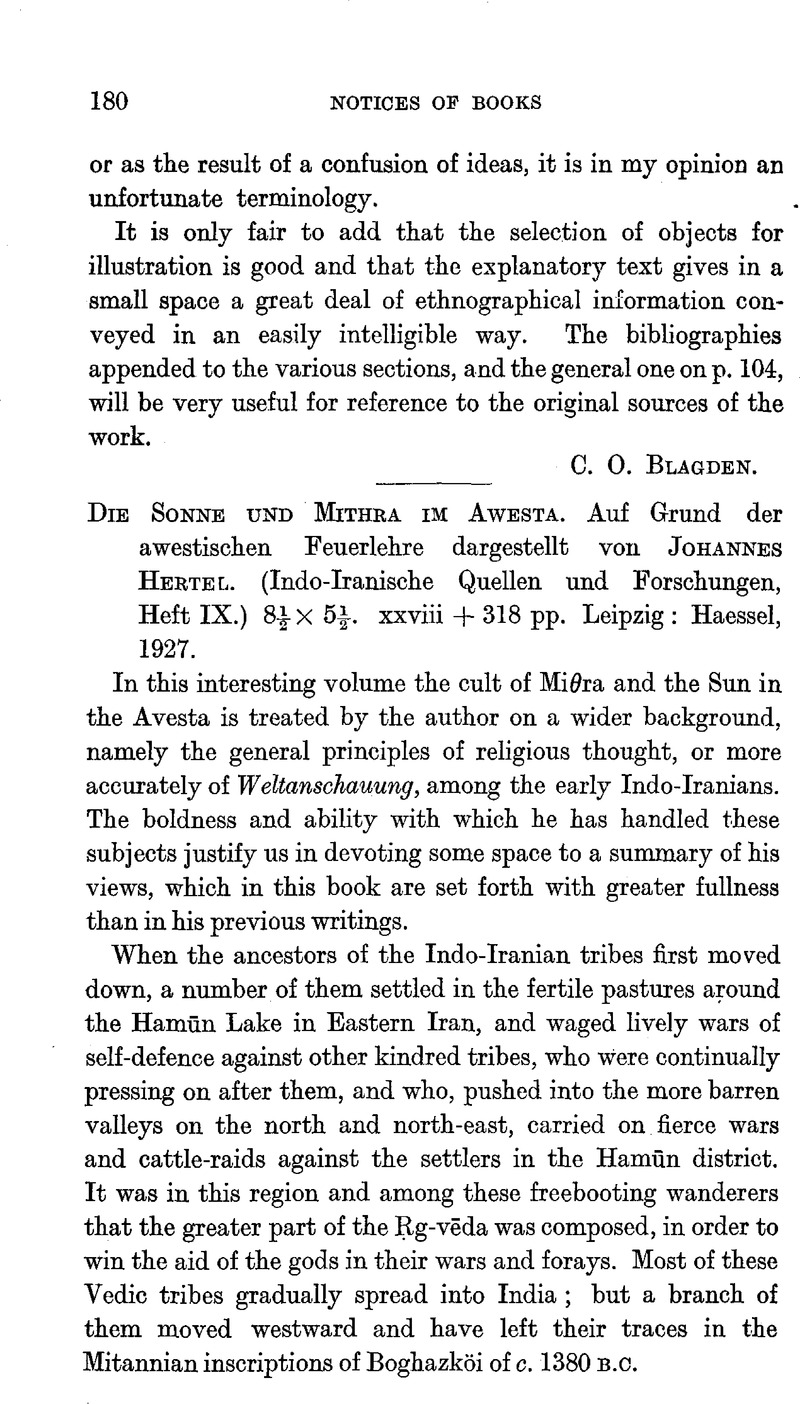No CrossRef data available.
Article contents
Die Sonne und Mithra im Awesta. Auf Grund der awestischen Feuerlehre dargestellt von Johannes Hertel. (Indo-Iranische Quellen und Forschungen, Heft IX.) 8½ × 5½. xxviii + 318 pp. Leipzig: Haessel, 1927.
Published online by Cambridge University Press: 15 March 2011
Abstract

- Type
- Notices of Books
- Information
- Copyright
- Copyright © The Royal Asiatic Society 1928
References
page 181 note 1 Dr. Hertel holds that the Sarasvatī from which Māthava is said to have started on his journey is the Arachotus, and that hence the story points to the movement of a Vedie tribe from Eastern Iran eastwards not long before the composition of the Śat. Br., which was quite late, as it shows Middle Persian phonetics in the name Bashika.
page 185 note 1 From which of these two characters M. derived his attribute as guardian of compacts is not clear. Dr. Hertel shows very acutely and rightly how this might have happened, and how mitrá, miθra came to mean “compact”, and then “party to a compact”, a process which we may perhaps state thus: Mitra → formal covenant as work or manifestation of M. → covenant generally → one of the covenanters → generally friend (Skt. mitrám, neut., influenced perhaps by vṛtrám “enemy”). But this development could hardly have started unless at the outset M. had been generally recognized as a sort of Zεὺς Ὄρκιος or Deus Fidiug; and this must have been very early.
page 185 note 2 Thus the note on p. 39, which places the entry of the Vedic tribes into India at about 400 b.c., is difficult to reconcile with historical facts and the admitted existence of a Vedic tribe in Mitanni c. 1380 b.c. On p. 96 Yasna xxii. 10, acištem vaēnaijhē rightly translated “aufs finsterste betrachten” and explained as meaning “to condemn to destruction”; but this some what weakens the force of the argument on p. 180 f. that Yašt x. 29, tūm ahō vahištasca, etc., must refer to the alternate brightness and gloom of the sky. On p. 250, in the translation of ahurānīšahurahyā as “die Gemahlinnen des Herrschers, des Herrschers Töchter”, the reference to Aryan incest seems unnecessary, as I think we may regard the phrase as merely pleonastic. I feel also some slight doubt as to the meaning “shine” assigned to ![]() .
.




